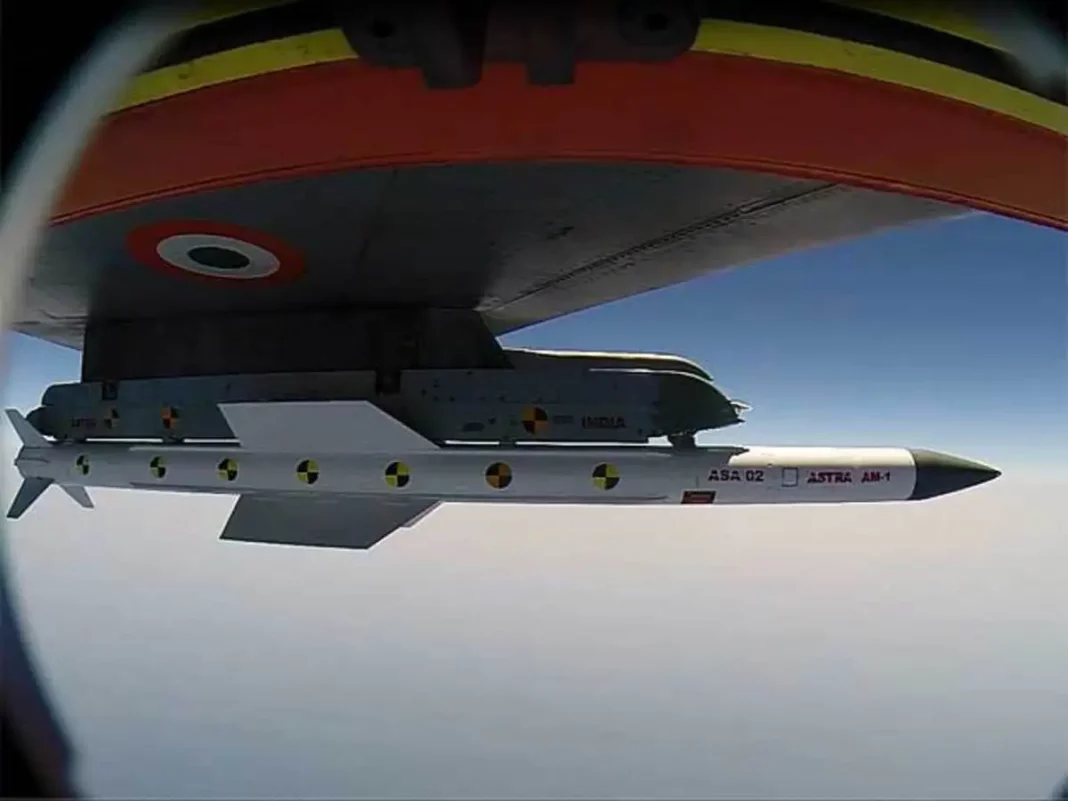India’s defence preparedness received a major boost this week with confirmation that the homegrown Astra Mk1 missile will be integrated into the newly acquired Rafale Marine fighter jets, part of a Rs 63,000 crore deal with France. The integration marks a turning point in India’s push for self-reliance in advanced defence systems and air combat technologies.
The Rafale Marine fighters, expected to join the Indian Navy from 2028 aboard the aircraft carrier INS Vikrant, usually carry French-made MICA and Meteor missiles. However, India has decided to equip them with the Astra Mk1 — the country’s first Beyond Visual Range Air-to-Air Missile (BVRAAM) — developed by the Defence Research and Development Organisation (DRDO) and manufactured by Bharat Dynamics Limited (BDL).
Here’s why the Astra-Rafale integration is far more than a routine technical upgrade:
1. Enhancing Self-Reliance through Indigenous Tech
The Astra missile, developed by the Defence Research and Development Organisation (DRDO) and manufactured by Bharat Dynamics Limited (BDL), is a flagship example of India’s push for Aatmanirbhar Bharat (self-reliant India). Integrating it with a high-end foreign platform like the Rafale sends a clear signal — India is ready to match global standards with homegrown solutions.
This move reduces long-term dependence on foreign suppliers, builds local expertise, and strengthens India’s strategic autonomy.
2. Operational and Logistical Efficiency
Astra is being designed as a universal missile system for both the Indian Air Force (IAF) and the Navy. Standardizing across multiple platforms like the Su-30MKI, Tejas Mk1A, MiG-29K, and Rafale simplifies logistics, reduces maintenance complexity, and cuts down on training time.
This kind of interoperability is crucial in high-stakes, high-tempo scenarios, where rapid deployment and consistent armament across platforms offer a tactical edge.
3. A Cost-Effective Force Multiplier
Imported air-to-air missiles like the Meteor cost upwards of ₹25 crore per unit. Astra Mk1, in contrast, is priced at ₹7–8 crore, making it a far more scalable solution. With comparable performance in key areas, Astra allows India to equip more fighter jets with powerful BVRAAMs without straining the defense budget.
This affordability supports mass deployment and long-term sustainability.
4. Longer Reach with Astra Mk1 & Mk2
While the French MICA missile maxes out at around 80 km, the Astra Mk1 reaches up to 110 km — already an improvement. The upcoming Astra Mk2, expected by 2026, will extend this range to 160 km, rivaling top-class systems like the Meteor and China’s PL-15.
This range increase is vital, especially as India faces regional threats from advanced platforms fielded by China and Pakistan.
5. Strategic and Technological Flexibility
Being developed and owned in India, the Astra program offers unmatched flexibility. Modifications, upgrades, or variant development can proceed without having to rely on foreign manufacturers or endure lengthy approval processes.
In contrast, many imported missiles come with licensing restrictions or software locks, limiting their use and adaptability across different aircraft.
6. Industrial Growth and Technology Transfer
The Rafale deal includes provisions for technology transfer and the setup of maintenance, repair, and overhaul (MRO) facilities within India. This opens doors for further weapon integration projects, encourages private-sector participation, and creates high-skill jobs, further energizing India’s defense manufacturing sector.
| Reason | Impact |
|---|---|
| Self-Reliance | Reduces foreign dependence; boosts Indian R&D |
| Operational Efficiency | Universal use across IAF and Navy platforms |
| Cost Savings | Astra is 3x cheaper than Meteor |
| Performance Upgrade | Longer range than MICA; Mk2 to rival Meteor and PL-15 |
| Strategic Flexibility | No licensing or platform restrictions |
| Industrial Growth | Strengthens domestic ecosystem; supports MRO and future innovation |
The integration of the Astra missile with Rafale Marine is not just about adding a new weapon to India’s fighter jets — it’s a strategic decision that embodies the country’s shift toward self-reliant, cost-effective, and future-ready air combat capabilities. As Astra Mk2 and Mk3 take shape, India is not just catching up with the world — it’s building a path to lead in the skies.





